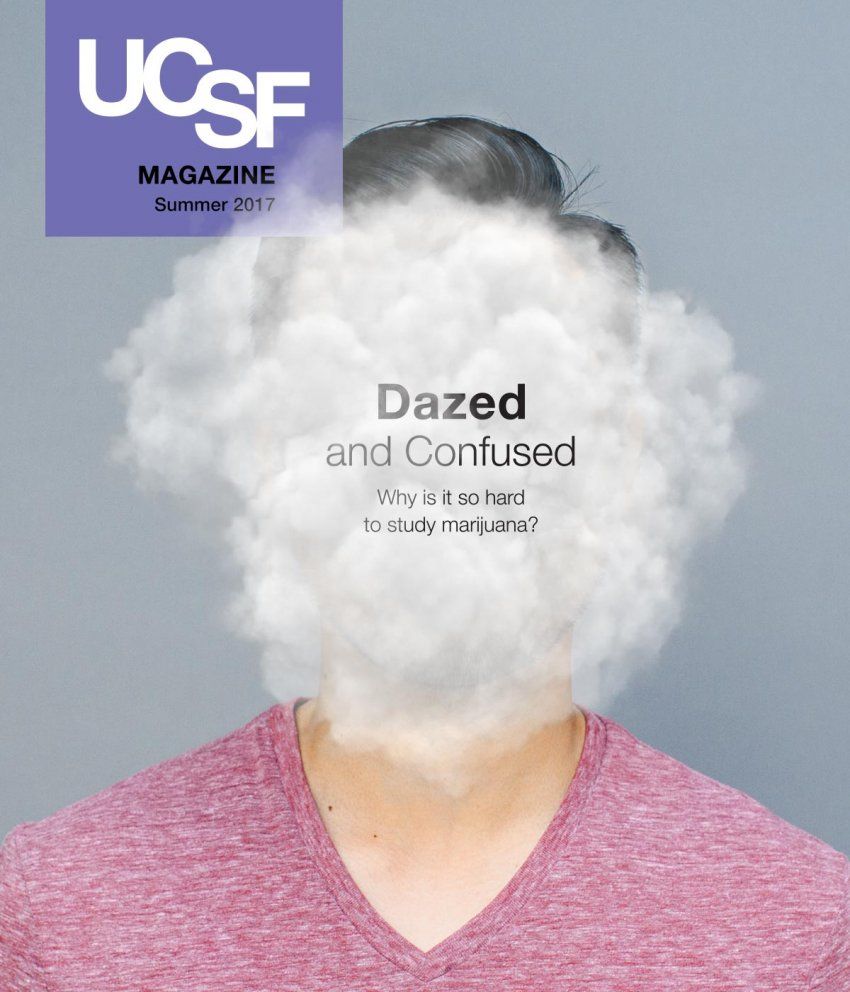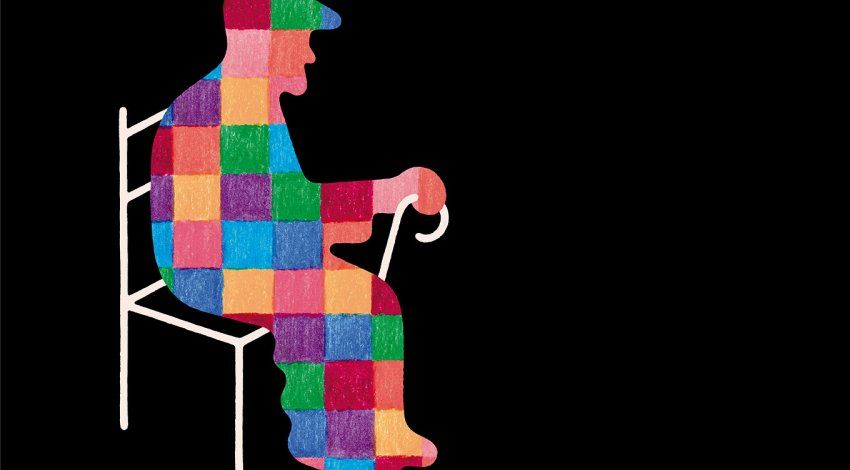
At a Paul McCartney concert at San Francisco’s AT&T Park in 2010, Matthew Springer, PhD, wasn’t shocked to be surrounded by a haze of marijuana smoke. He was, however, amazed that the audience tolerated it without complaint.
“All of these people knew to avoid smoke from cigarettes, because the public health community has been saying that for decades,” recalls Springer, a professor of medicine at UC San Francisco. But, he adds, “we haven’t been given that message about marijuana smoke, so people thought that it was different – that it was somehow okay.”
Was it? Springer wondered.
Now that recreational, in addition to medical, marijuana is legal in California – thanks to the resounding approval in November of Proposition 64’s Adult Use of Marijuana Act – there is renewed urgency about seeking more information on the drug’s health effects, both positive and negative.
UCSF scientists recognize marijuana’s contradictory status: the drug has significant proven and potential therapeutic uses, but it can also lead to tremendous public health problems. Everyone agrees that a stronger evidence base is key.
Is second-hand marijuana smoke as dangerous as tobacco smoke? What are the possibilities for its clinical use, and why is it so hard to study them? As new laws create a new industry, are we forgetting the hard-won public health lessons from battling Big Tobacco?
“We are left with so many questions,” says Reto Auer, MD, MAS ’13, who launched a study on marijuana and cognitive function while he was enrolled in UCSF’s Training in Clinical Research program. Published in JAMA Internal Medicine in 2016, the findings showed that study participants who reported long-term marijuana use experienced some memory problems by midlife.
“Academically it’s interesting to be in a field where so little is known,” Auer adds, “but it’s a shame we can’t better inform the public.”
The Feds:
just say ‘no’ to research
Marijuana, now legal by a doctor’s order in 29 states and recreationally in eight states (plus the District of Columbia), remains in the same class federally as heroin and LSD – a Schedule I drug, designated as having “a high potential for abuse” and “no currently accepted medical use.” Federally, marijuana is considered more dangerous than prescription opioids like OxyContin and Vicodin, which were linked to more than 15,000 deaths in 2015 and are responsible for epidemic levels of addiction and abuse, according to the U.S. Centers for Disease Control and Prevention.
“Every day, I see patients who benefit from using cannabis as medicine,” says Donald Abrams, MD. “It’s a benign and safe agent that’s been used for thousands of years.” Abrams, who studies the safety and pain relief properties of marijuana, is chief of the Hematology-Oncology Division at Zuckerberg San Francisco General Hospital and a resident alumnus.
Studying marijuana means navigating complex regulatory hoops, including reviews by the Food and Drug Administration (FDA), the Drug Enforcement Administration (DEA), the National Institute on Drug Abuse (NIDA), and at UCSF, the Research Advisory Panel of California.
Included in the DEA’s stringent regulations for purchasing, storing, documenting and disposing of marijuana is the requirement that each lab must have an alarm-controlled, locked container that is physically attached to the floor or wall and to which access is limited.
“The DEA visited and determined that we had to do more to bolt down the locked freezer,” says Judith Hellman, MD, a professor and vice chair for research in the Department of Anesthesia and Perioperative Care. It took close to a year to get the approvals, says Hellman, who studies the immune modulating effects of cannabinoids.
“It was kind of comical, with all of these medical marijuana dispensaries scattered around town, sitting in my office and talking about everything we had to do to get a small amount of THC, cannabidiol, and cannabinol – 400 milligrams – to use over [the course of] a year,” recalls Hellman.
Cannabinoids: powerful promise in fighting infection
Five years ago, a news article about the use of cannabis for medical conditions – including chronic inflammation – piqued the interest of Judith Hellman, MD, a professor and vice chair for research in the Department of Anesthesia and Perioperative Care at UCSF.
Could the drug, she wondered, also ease acute inflammation? The focus of Hellman’s research is post-operative sepsis – a total-body immune response to bacterial, viral, fungal, or parasitic infection that causes dysregulated inflammation, severely damaging organs and tissues.
Currently, there are no approved sepsis-specific therapies. After decades of research, the mainstays for treatment remain antibiotics and the support of dysfunctional organs and systems. But these measures do not have a stellar success rate; sepsis still has a mortality rate of over 30 percent.
“We’re looking for new ways to reduce inflammation during that initial onslaught, the first couple of days,” says Samira Khakpour Lawton, a 2017 PhD candidate and a member of Hellman’s lab. “We thought that targeting the body’s cannabinoid receptors could be a logical therapeutic.”
Initially, Hellman wanted to study phytocannabinoids – components of the cannabis plant. While her lab was entangled in the lengthy process of applying for federal and state approvals, she turned her attention to endocannabinoids. These chemical compounds are naturally synthesized in the human body and activate the same cannabinoid receptors, which are involved in a variety of physiological processes, including immune responses.
There are a half-dozen acknowledged endocannabinoids, and it’s unclear, says Lawton, what they all do or what triggers their production.
In the Journal of Biological Chemistry in 2014, Hellman’s group reported the discovery of an endocannabinoid that potently modulates cellular inflammation. They speculate that the endocannabinoid system represents what may be a “novel immune regulatory system” to ameliorate inflammatory disorders, including sepsis.
Hellman now has the regulatory approvals to add phytocannabinoids to her research and is starting with the plant’s three major components – THC, CBD, and CBN.
“There’s a good chance they will have similar immune-modulating effects,” Hellman says, “and perhaps more powerful.”
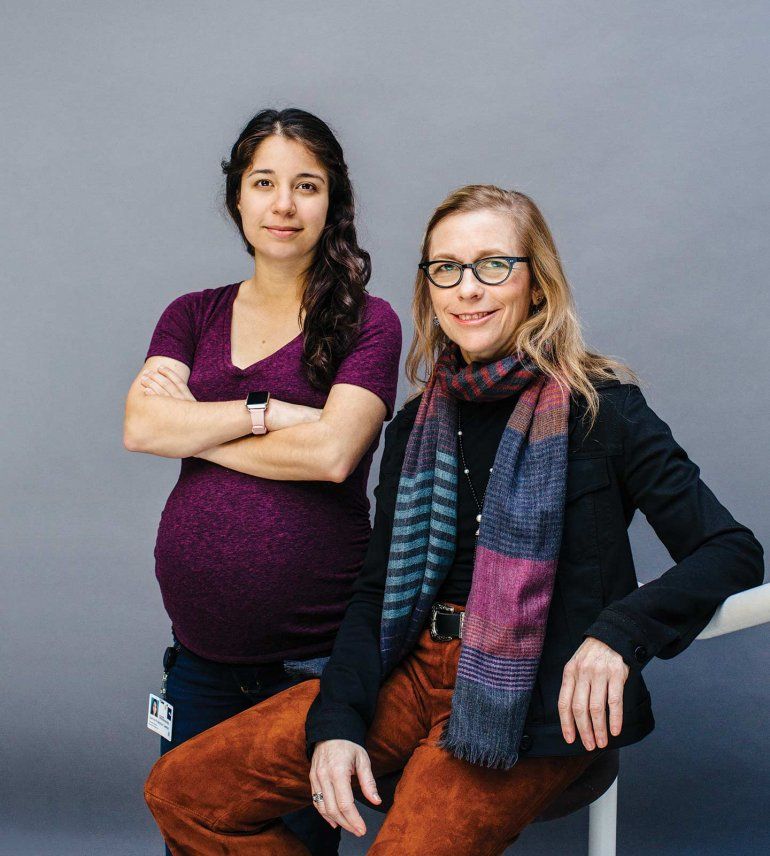
Judith Hellman (right) with Samira Khakpour Lawton, a 2017 PhD candidate and a member of Hellman’s lab. Photo: Elena Zhukova
It was kind of comical...talking about everything we had to do to get a small amount of THC.”
Restricted supply:
restricted research
The humor would likely be lost on the DEA, which long designated NIDA – part of the National Institutes of Health (NIH) – as the sole source of cannabis for scientists. Until recently, NIDA, under an exclusive government contract in place since 1968, paid the University of Mississippi $69 million in 2015 to grow all the country’s research-grade marijuana. While the DEA opened production to other growers last year, none have yet been able or willing to comply with the agency’s regulatory requirements.
The roadblocks to studying marijuana go beyond regulatory obstacles, says Abrams, who co-authored a chapter on barriers to such research in a 2017 report titled “The Health Effects of Cannabis and Cannabinoids.” This landmark report was published by a committee of the National Academies of Science, Engineering, and Medicine (NASEM) of which Abrams was a member.
Every day, I see patients who benefit from using cannabis as medicine. It’s a benign and safe agent that’s been used for thousands of years.”
One obstacle, he explains, is the limit NIDA puts on varieties of the drug that can be used in research. Different strains of marijuana have varying chemical components, so they ameliorate clinical symptoms differently. Cancer-related nausea and poor appetite, for example, are better relieved by cannabis high in THC, the psychotropic component of marijuana. However, there is evidence that chronic pain, inflammation and insomnia are better relieved by cannabis high in cannabidiol (CBD).
“In the past, NIDA pretty much only had low-THC, zero-CBD strains,” says Abrams, who has battled with federal agencies to procure cannabis with higher levels of THC and CBD for his current research on easing symptoms for patients with sickle cell anemia. It’s even more difficult for researchers who want to look at newer delivery systems. “Right now, cannabis oil is popular,” Abrams continues. But “because the NIDA supply has not yet been trialed in humans, if I write a proposal to try to study it, the FDA will say it’s a ‘novel molecular entity’ and make it difficult to do.”
NIDA’s focus on substance abuse can be another challenge. “A lot of the studies that NIDA has supported look at the downsides. Studies about the benefits are rarer,” says Abrams, who is also an integrative oncologist at the UCSF Osher Center for Integrative Medicine. “You have to use NIDA’s cannabis but need to get funding from somewhere else.”
These barriers to conducting comprehensive research – which mean patients and providers may lack treatment options and policymakers may lack a full evidence base – constitute“a public health problem,” concludes Abrams.
But there may soon be a small break in the funding dam, at least in California. Proposition 64 once again commits state support to the Center for Medicinal Cannabis Research, housed at UC San Diego. The state legislature established the center, thanks to a budget surplus in 1999, with $9 million in funding. That money is long gone, but the new law earmarks $2 million annually – out of an expected $1 billion to be raised from the taxes levied on recreational marijuana retailers and growers – for the center’s research.
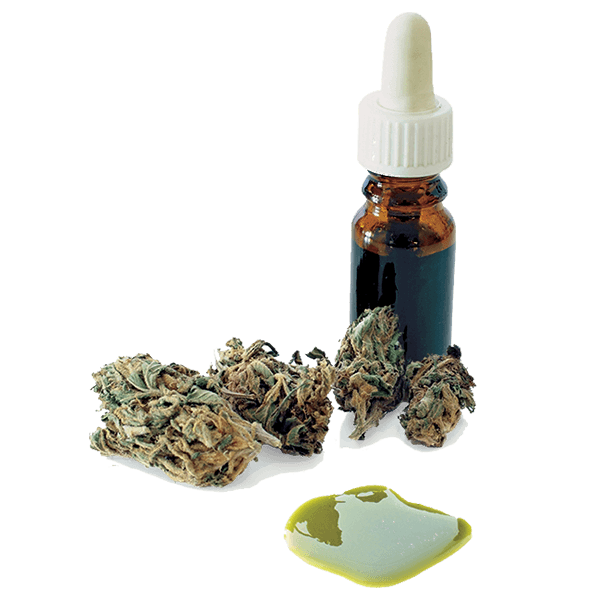
Cannabis: a breakdown
THC (delta-9-tetrahydrocannabinol): the main psychoactive component of cannabis; induces feelings of euphoria. Therapeutic uses: reduces nausea and chronic pain; stimulates appetite.
CBD (cannabidiol): the main nonpsychoactive component of cannabis; relaxes the mind and body. Therapeutic uses: reduces inflammation, insomnia, sleep apnea, spasticity, and pain.
CBN (cannabinol): the secondary psychoactive component of cannabis, formed as THC ages. CBN has no painkilling effects and is associated with headache and lethargy rather than euphoria.
Marijuana:
the new Big Tobacco
Stanton Glantz, PhD, the American Legacy Foundation Professor of Tobacco Control and director of the UCSF Center for Tobacco Control Research and Education, has a less rosy view of California’s new law.
We’ve had 50 to 60 years of trench warfare with the tobacco industry to get where we are today. Getting sensible tobacco regulation has been a gigantic battle. That’s the way it’s going to be with marijuana.”
First, he argues, the legislation won’t help fill the state’s coffers because of the substantial costs associated with regulation, enforcement, and the increased health care burden. Second, “we’re creating a major market which is going to be eventually taken over by large corporations, with very sophisticated product engineering and marketing capacity,” says Glantz, who has published widely on the effects of secondhand smoke, as well as the public health and policy impacts of recreational marijuana legislation.
“Today’s marijuana products are very low tech – ground-up leaves in a piece of paper, like a cigarette in about 1880. Today’s cigarettes and junk food are highly engineered products. Cigarette companies use technology like varying the porosity of the paper or using burn enhancers or adding sugar to make [the product] more addictive. It’s designed to maximize consumption,” says Glantz.
While the new law initially gives preference to smaller growers, delaying for five years the issuance of licenses to cultivate large tracts (22,000 square feet or more), the state’s licensing program doesn’t go into effect until January 1, 2018. During the current legal limbo, licenses are being issued by local jurisdictions for industrial-sized operations. Marijuana will eventually be dominated by big business, and those corporations, says Glantz, “will exercise tremendous political power to protect their profits.”
A policy analysis led by Glantz and published in PLoS Medicine in 2016 encouraged the establishment of a state monopoly on production, distribution, and sales to prevent the legalized marijuana industry from becoming, as he puts it, the “next big tobacco or alcohol.”
Instead, the new law advances marijuana as a business opportunity, largely regulated by the Department of Consumer Affairs. The Department of Public Health has “no meaningful role in terms of the kind of big demand-reduction program that we think is needed,” Glantz says.
While applauding the new law for decriminalizing marijuana use, Glantz wishes it could have been done “without creating a big new public health mess. We’ve had 50 to 60 years of trench warfare with the tobacco industry to get where we are today. Getting sensible tobacco regulation has been a gigantic battle. That’s the way it’s going to be with marijuana.”
Matthew Springer, too, is concerned that California’s legalization of recreational marijuana will fail to protect public health. After that night at AT&T Park, he immediately set out to add exposure to marijuana smoke to his studies on secondhand tobacco smoke. “That was a crystallizing moment,” Springer says. “There are toxins from burning any plant material.”
While the state’s new law prohibits smoking marijuana in public “there will be more opportunity,” Springer points out, “for people to be exposed involuntarily.”
“Three times I’ve gone up to people in underground subway stations and asked them not to smoke marijuana there,” he says. “They were so stoned I couldn’t get through to them. People who smoke tobacco are lucid. People who are drunk may not be lucid, but they’re not exhaling smoke in your face.”
Marijuana and tobacco: both go up in toxic smoke
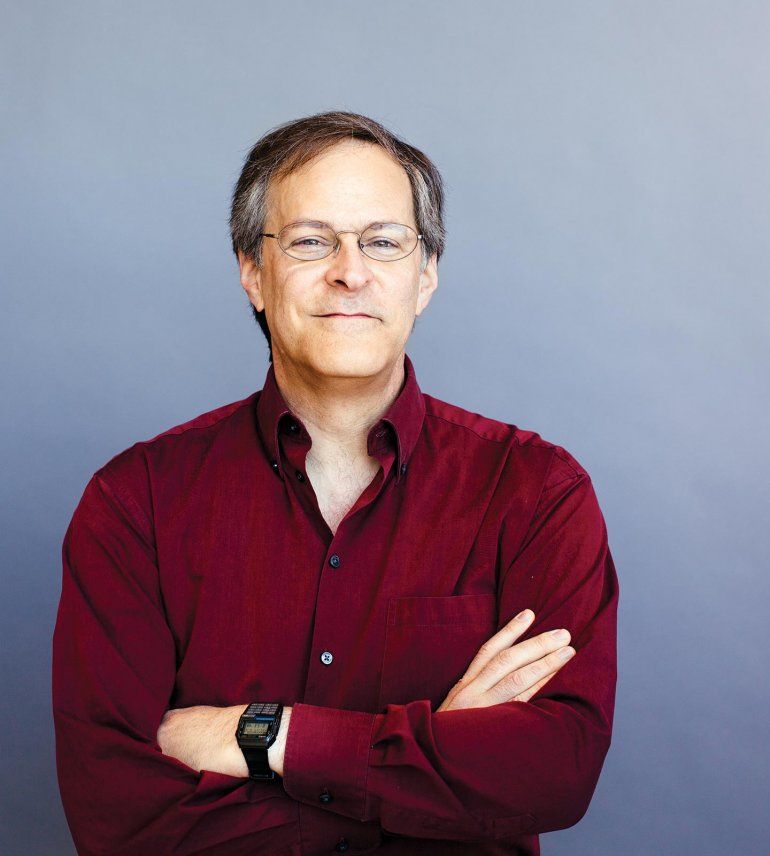
Matthew Springer. Photo: Elena Zhukova
I want to err on the side of safety.”
Matthew Springer, PhD, a professor of medicine at UCSF, isn’t anti-drug or anti-marijuana. After a decade of research on tobacco and more recent work on cannabis, he is simply anti-smoke.
Just one minute of exposure to secondhand smoke from marijuana diminishes blood-vessel function in rats to the same extent as exposure to secondhand tobacco smoke. Furthermore, the harmful cardiovascular effects last considerably longer – more than 90 minutes, compared to less than 30, says Springer, the senior author of a 2016 study on the subject in the Journal of the American Heart Association.
“Whether it was marijuana with THC or placebo marijuana with no cannabinoids, it was the same,” Springer says. “This is a result of exposure to smoke from burning plant material.”
Springer, who has published widely on the effects of secondhand smoke, acknowledges that his study didn’t “prove” that marijuana smoke is harmful for humans. “There’s the distinction between proving something is harmful and [knowing it is] harmless,” he says. “I want to err on the side of safety.”
Springer’s current research measures cardiovascular sensitivity to new delivery systems for tobacco and marijuana – such as e-cigarettes, which aerosolize liquid solutions of nicotine or THC, and so-called volcano vaporizers, which heat rather than burn the plant material.
“If smoke itself is the problem, it’s logical to expect that leaf vaporizing might prevent that,” he says, cautioning that the results are not yet in. “If you want people to make better lifestyle decisions, it’s important to show if something really is better.”
Next up:
a political backlash?
Reto Auer, who is now an assistant professor at the University of Bern in Switzerland, continues to research the health effects of marijuana in collaboration with U.S. colleagues. He co-authored his latest findings with his UCSF mentor Mark Pletcher, MD ’98, MPH, resident alumnus, and a professor of epidemiology and biostatistics; published in the online edition of the American Journal of Public Health in February, their analysis found no link between marijuana use and cardiovascular disease in middle age.
Auer and Pletcher conducted their analysis using data from the Coronary Artery Risk Development in Young Adults (CARDIA) study, which followed more than 5,000 Americans aged 18 to 30 for over 25 years, beginning in 1985. By analyzing existing data, they didn’t have to deal with the regulatory scrutiny faced by researchers who work directly with the drug.
Switzerland, where possession of small amounts of marijuana has been decriminalized but not legalized, has its own byzantine rules and political wrangles about marijuana research, particularly regarding recreational use. But the situation there is not nearly as challenging as in the U.S., where “the laws are so hard,” Auer says.
The NASEM report that Abrams contributed to – the first review since 1999 of research on the human health impacts of cannabis use – sought to ease those onerous regulatory barriers. In late January, two weeks after the report’s release, a bill was introduced in the House of Representatives in accord with one of the report’s recommendations to advance research efforts: a federal rescheduling of marijuana.
However, that bill may languish. In a reversal of the previous administration’s policy, White House officials announced in February that they expect “greater enforcement” of current federal marijuana laws when they conflict with laws in states where recreational use is permitted. Whether that will have a further chilling effect on research remains to be seen.
“It would be a real shame if medicinal marijuana research was put in jeopardy because it’s a drug used recreationally,” Hellman says. “It’s really time for us to understand how it works, what doesn’t work, and how it’s beneficial. We should be studying it like any other drug.”


